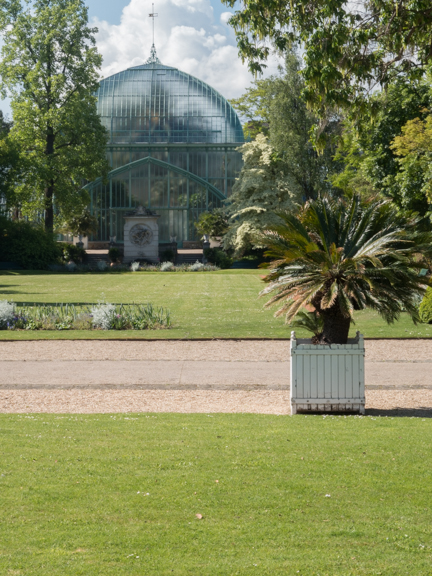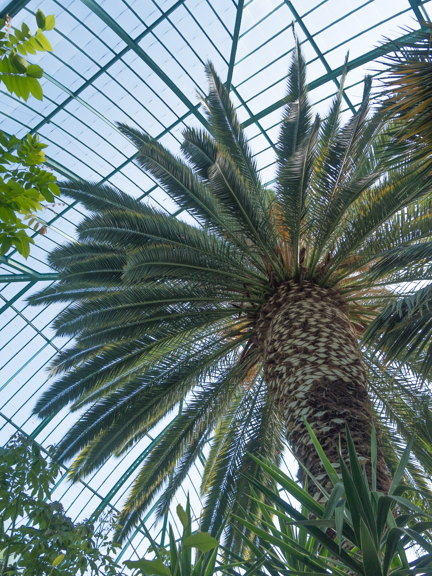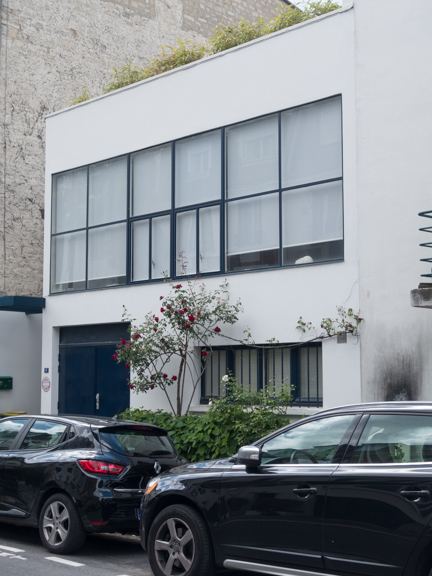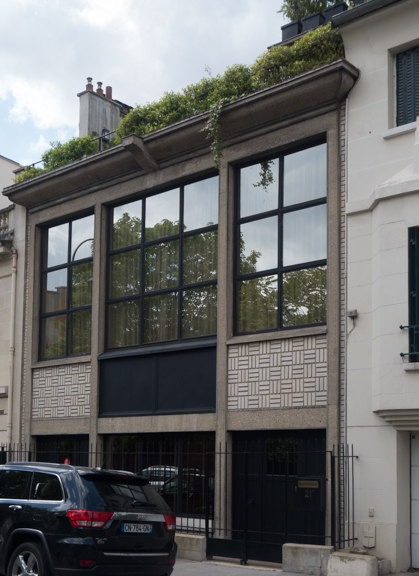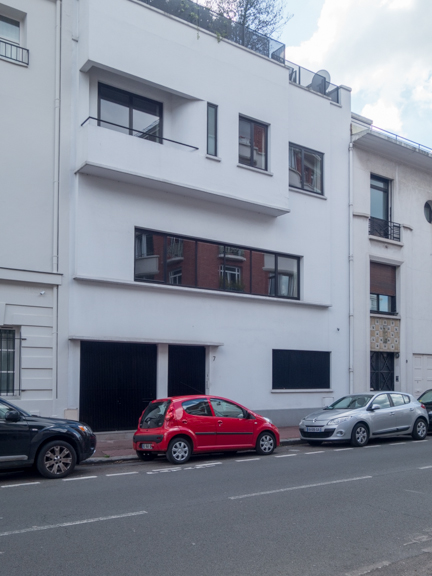We have a bunch of books of Paris walks, because Paris is definitely a city that rewards walkers. Heck, there’s even a French word for a person who just strolls in the city: flaneur. That’s us, a pair of flaneurs in our favorite city.
Paris also rewards looking up. This city has thousands of beautiful buildings, from every era. We have become aficionados of architecture here, so the book “Architecture of Paris” by the architect and architectural historian Noval White is going to become a favorite. It contains 58 walks, in all parts of Paris, and points out every interesting building on the walk – the good, the bad, the beautiful and the ugly (and yes, there are some really ugly buildings here). We took our first Norval White walk yesterday and, even though we got through only a third of it – in two hours! – the walk took us to many things we otherwise never would have seen.
Now, the starting point of our walk is not likely to receive visits from tourists and, in fact, not much more likely to see Parisians. Here, the city of Paris raises all the plants and flowers that are used throughout the city. It also has a huge glass greenhouse containing many different types of palm trees and other tropical plants. In this huge garden – probably fifty acres of so – we saw one jogger, two mothers with strollers, and one other person.
Ville de Paris Establissement Horticultural
Modern Architecture in Paris
The walk then took us through the neighborhood of Boulogne. Now, most Paris visitors know of and have visited the Bois de Boulogne – the huge park at the west side of the city. The neighborhood of Bolougne is quite an interesting area: definitely up-scale, and the site of many of the best modernist buildings in Paris. In the 1920s and 1930s a number of modernist architects built here and so it’s possible to see the works of many architects in a relatively small area. Among these architects were the foremost of the modernist movement: Le Corbusier, Mallet-Stevens, Raymond Fischer, George-Henri Pingussson.
I thought that modern architecture in this city of old and beautiful buildings would be ugly, but I was wrong. In this area, which has many traditional and modern buildings, the modern buildings fit in well. I guess that beautiful buildings are beautiful, no matter where they are.
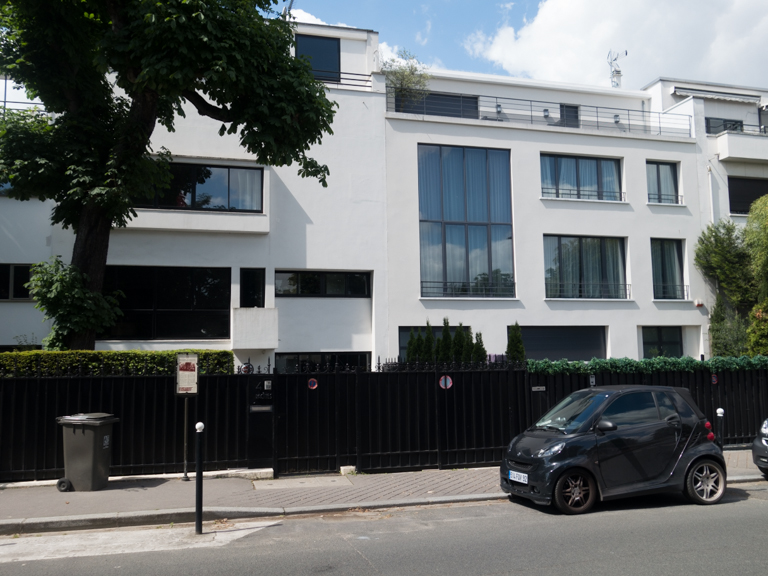
Conversely, an ugly building is an ugly building no matter where it is. This one is a miss – and a mess:
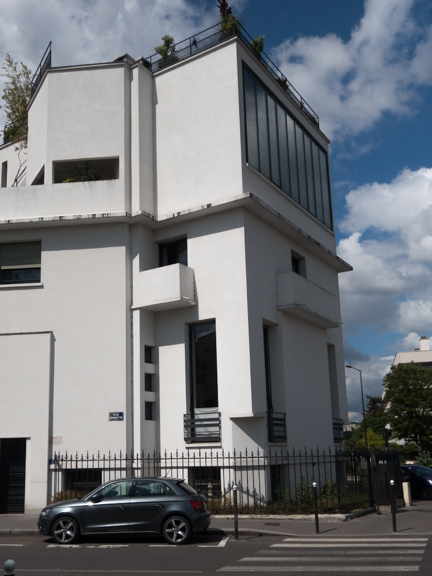 Later in the day, after a rest and a bit of vino, we walked to a church nearby. This church is modeled after Hagia Sofia in Istanbul, and is way different than any other church we’ve seen in Paris or anywhere. It’s a huge space inside, with a huge dome, as in Hagia Sofia. My photographic skills aren’t up to conveying the sense of Eglise de Saint-Espiritu, but here’s a picture looking up into the dome.
Later in the day, after a rest and a bit of vino, we walked to a church nearby. This church is modeled after Hagia Sofia in Istanbul, and is way different than any other church we’ve seen in Paris or anywhere. It’s a huge space inside, with a huge dome, as in Hagia Sofia. My photographic skills aren’t up to conveying the sense of Eglise de Saint-Espiritu, but here’s a picture looking up into the dome.
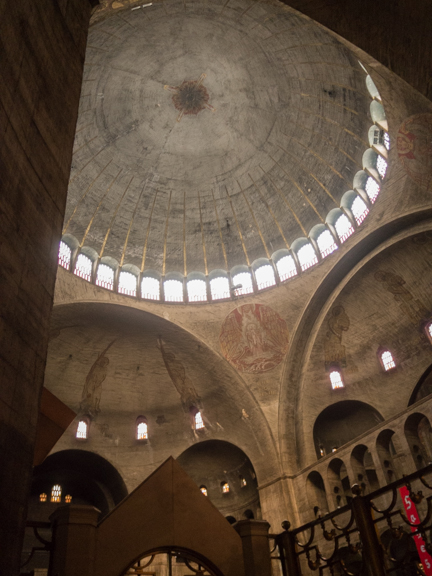 And last, the front window of a store that repair sewing machines. Like the bookbinder, there can’t be much call for the services offered here, but it survives, and we loved the window:
And last, the front window of a store that repair sewing machines. Like the bookbinder, there can’t be much call for the services offered here, but it survives, and we loved the window:
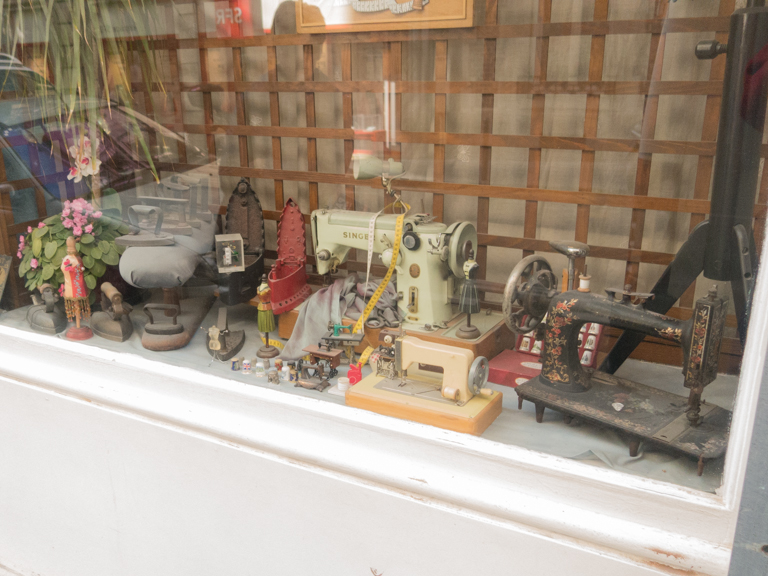 We were whupped after this day. Dinner, another glass of wine, and sleep.
We were whupped after this day. Dinner, another glass of wine, and sleep.

